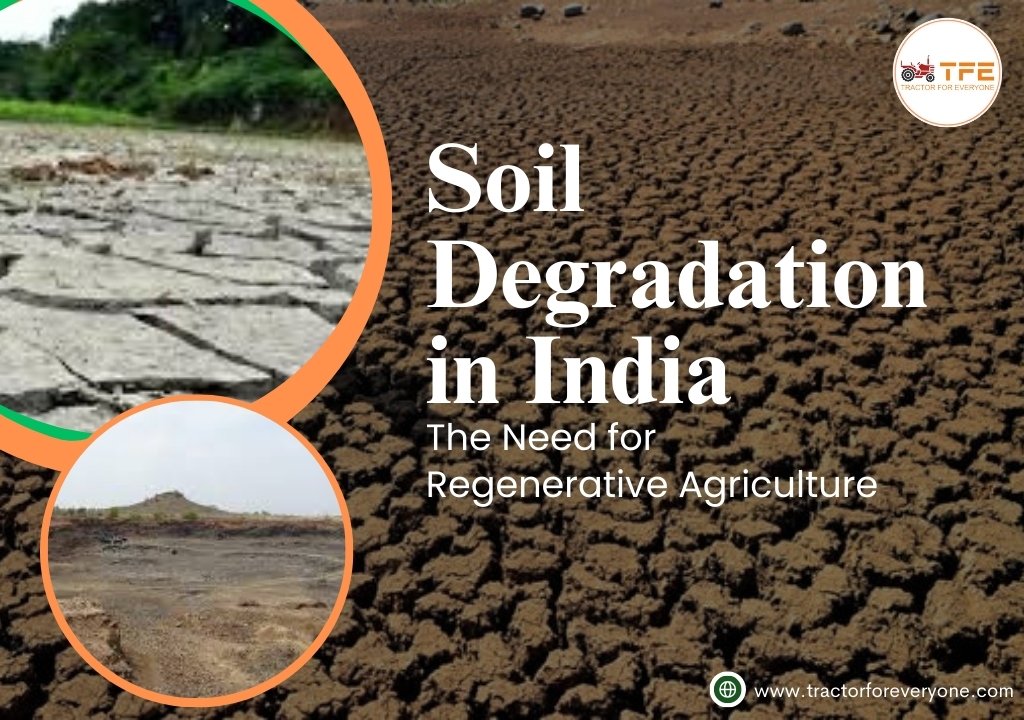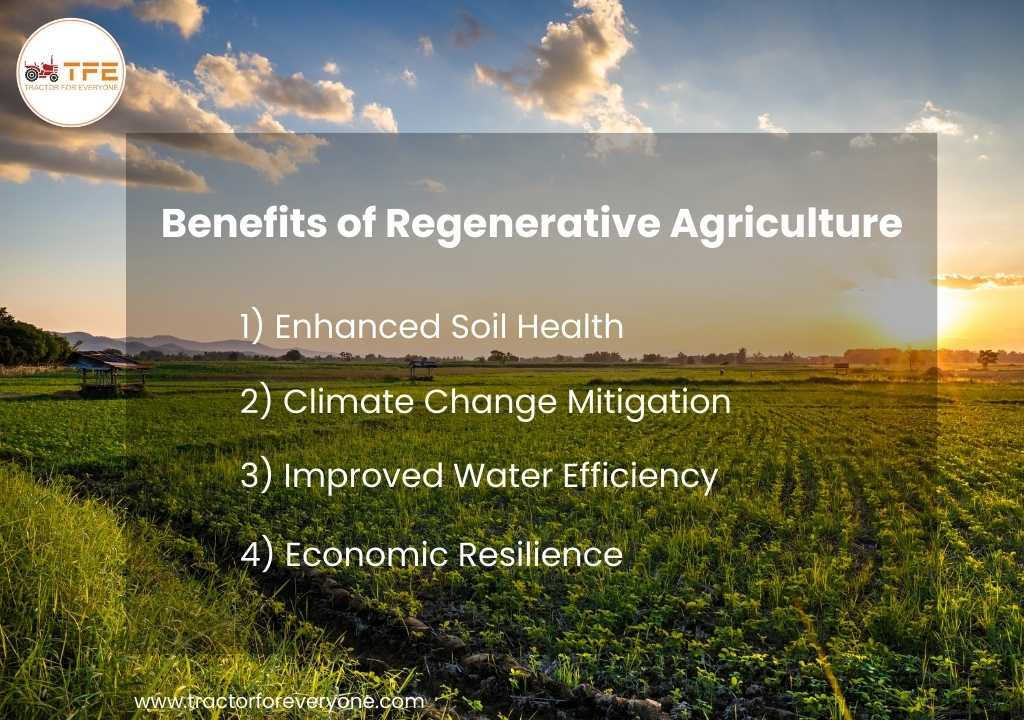Best Used Car, Services, Auto Parts, Rent Car Available for Buy and Sell Near By Go Ahead
- Swaraj Price 2025: Latest Swaraj Tractor Price List and On-Road Rates in India
- महिंद्रा मिनी ट्रैक्टर - कीमत, मॉडल, और सुविधाएँ
- Best Tractors in India 2025: Top 10 Picks for Every Farm Size
- Swaraj 855 FE Tractor Review 2025 Features, Price and Performance Explained
- महाराष्ट्र फार्मर आयडी: ऑनलाइन नोंदणी प्रक्रिया, कागदपत्रे आणि फायदे
- Sonalika Tractor Price 2025 Complete List of Models, Series and Latest Offers
- Swaraj Tractor Price List 2025: Best Tractors for Small, Medium & Large Farms
- Swaraj 744 FE Price, Features & On-Road Cost Explained for 2025
- Mahindra Tractors Price 2025: Complete List, Series-Wise Comparison and Best Models
- New Holland 3630 TX Super Plus+ Tractor Review 2025: Features, Price and Performance

Soil Degradation in India: The Need for Regenerative Agriculture
The Crisis of Soil Degradation
Soil degradation in India is a pressing concern, with over 29% of the country’s agricultural land—about 96.4 million hectares—currently affected. This degradation not only threatens food security but also poses significant risks to India’s environmental and economic sustainability. With the global commitment to achieve land degradation neutrality by 2030, the adoption of sustainable agricultural practices has become imperative.
What Causes Soil Degradation?
Key factors contributing to soil degradation include over-reliance on chemical fertilisers, unsustainable farming practices, deforestation, and overgrazing. These activities disrupt soil structure, reduce organic matter, and deplete essential nutrients, leaving the land less fertile and more susceptible to erosion.
Regenerative Agriculture: A Path to Restoration
Regenerative agriculture offers a practical solution to address soil degradation. By focusing on enhancing soil health, biodiversity, and water retention, it aims to restore degraded lands while supporting farmers' livelihoods.
Key Practices in Regenerative Agriculture
No-Till Farming: Reduces soil disturbance, improving soil structure and moisture retention.
Cover Cropping: Protects soil from erosion, enhances nutrient cycling, and improves organic matter.
Agroforestry: Integrates trees with crops, offering shade, reducing erosion, and boosting biodiversity.
Crop Rotation: Alternates crops to improve soil fertility and reduce pests and diseases.
Also Read: Sustainable Farming Practices: Adapting to Modern Challenges in Agriculture
Benefits of Regenerative Agriculture

1. Enhanced Soil Health
These practices rebuild soil organic matter and improve soil fertility, making land more productive over time.
2. Climate Change Mitigation
Regenerative agriculture plays a crucial role in carbon sequestration. Studies show that smallholder farmers can sequester 1 to 4 tons of CO2 per hectare annually, contributing to climate resilience. This can also open avenues for farmers to earn from carbon credits, valued between ₹1,500 to ₹2,500 per ton.
3. Improved Water Efficiency
By enhancing water retention and reducing runoff, these methods support efficient water use, crucial for drought-prone regions.
4. Economic Resilience
Healthier soils lead to better yields and reduce dependence on expensive chemical inputs, improving farmers' long-term profitability.
Current Initiatives Driving Change
Several organisations and programs are actively promoting regenerative agriculture in India:
Regenagri
Has brought 1.25 million acres of farmland under regenerative practices.
Sai Sustainable Agro and Krishi Janai PBC
Work with farmers to integrate sustainable techniques and improve awareness.
These initiatives are critical in scaling the adoption of regenerative agriculture and demonstrating its potential to transform India’s agricultural landscape.
Challenges to Adoption
Despite its benefits, the adoption of regenerative agriculture faces several barriers:
- Many farmers remain unaware of these practices and their long-term benefits.
- Transitioning from conventional methods requires training, financial support, and access to tools.
- Stronger policy measures and incentives are needed to encourage widespread adoption.
- Traditional farming practices are deeply ingrained, and farmers may hesitate to shift without tangible short-term benefits.
The Way Forward
To combat soil degradation and secure a sustainable future, a multi-pronged approach is essential:
Awareness Campaigns: Educate farmers about regenerative practices through workshops and demonstrations.
Financial Incentives: Provide subsidies, low-interest loans, and support for carbon credit programs.
Policy Support: Develop robust policies that integrate regenerative agriculture into national agricultural strategies.
Capacity Building: Train farmers and extension workers to implement and sustain these practices effectively.
India’s agricultural future depends on our ability to restore soil health and promote sustainable practices. Regenerative agriculture offers a promising path forward, but its success requires collective effort from farmers, policymakers, and organisations. By adopting these methods, we can not only revitalise our degraded lands but also ensure a resilient and sustainable agricultural ecosystem for generations to come.
Write a Comment
Popular Blogs View All
-

Swaraj Price 2025: Latest Swaraj Tractor Price List and On-Road Rates in India
07/24/2025, POSTED BY ADMIN -

महिंद्रा मिनी ट्रैक्टर - कीमत, मॉडल, और सुविधाएँ
02/18/2025, POSTED BY ADMIN -

Best Tractors in India 2025: Top 10 Picks for Every Farm Size
05/29/2025, POSTED BY ADMIN
Popular Video View All
-

महाराष्ट्रात Second Hand Tractors ची उत्तम संधी! तुमच्या बजेटमध्ये, विश्वासार्ह ट्रॅक्टर मिळवा!
12/16/2025, POSTED BY ADMIN -

TFE Reaper Machine Working | Full Multi-Crop Cutting Process!
12/16/2025, POSTED BY ADMIN -

5 Things You Need to Know Before Buying a Solis E Series Tractor
05/17/2025, POSTED BY ADMIN

